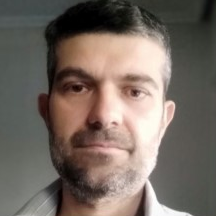Advances in Bioremediation and Biosorption Processes
A special issue of Processes (ISSN 2227-9717). This special issue belongs to the section "Biological Processes and Systems".
Deadline for manuscript submissions: closed (31 March 2024) | Viewed by 15392
Special Issue Editors
Interests: biological wastewater treatment; microalgae; filamentous fungi; biomass; adsorption
Special Issues, Collections and Topics in MDPI journals
Interests: cultivation of algae; biomass production; biotechnology for food, feed and biofuels; valorization of waste-streams; recovery and reuse of nutrients
Special Issues, Collections and Topics in MDPI journals
Special Issue Information
Dear Colleagues,
Biological processes or Biomaterials are widely applied to remediate wastewaters and solid wastes worldwide. Biological wastewater treatment can treat hazardous effluents into microbial biomass, clean water and less dangerous products protecting the environment and providing better management of these residues. Adsorption processes using biomaterials can also be applied with simpler processes than synthetic materials and also have lower costs. This Special Issue welcomes papers that describe the treatment of wastewaters or solid wastes by applying microorganisms/plants or biomaterials in biological or adsorption processes.
Dr. Carlos Eduardo De Farias Silva
Dr. Giorgos Markou
Guest Editors
Manuscript Submission Information
Manuscripts should be submitted online at www.mdpi.com by registering and logging in to this website. Once you are registered, click here to go to the submission form. Manuscripts can be submitted until the deadline. All submissions that pass pre-check are peer-reviewed. Accepted papers will be published continuously in the journal (as soon as accepted) and will be listed together on the special issue website. Research articles, review articles as well as short communications are invited. For planned papers, a title and short abstract (about 250 words) can be sent to the Editorial Office for assessment.
Submitted manuscripts should not have been published previously, nor be under consideration for publication elsewhere (except conference proceedings papers). All manuscripts are thoroughly refereed through a single-blind peer-review process. A guide for authors and other relevant information for submission of manuscripts is available on the Instructions for Authors page. Processes is an international peer-reviewed open access monthly journal published by MDPI.
Please visit the Instructions for Authors page before submitting a manuscript. The Article Processing Charge (APC) for publication in this open access journal is 2400 CHF (Swiss Francs). Submitted papers should be well formatted and use good English. Authors may use MDPI's English editing service prior to publication or during author revisions.
Keywords
- adsorption
- biomass
- biological wastewater treatment
- bacteria
- microalgae
- filamentous fungi
- yeasts
- protozoa
- isotherm
- kinetic
- contminat removal
Benefits of Publishing in a Special Issue
- Ease of navigation: Grouping papers by topic helps scholars navigate broad scope journals more efficiently.
- Greater discoverability: Special Issues support the reach and impact of scientific research. Articles in Special Issues are more discoverable and cited more frequently.
- Expansion of research network: Special Issues facilitate connections among authors, fostering scientific collaborations.
- External promotion: Articles in Special Issues are often promoted through the journal's social media, increasing their visibility.
- Reprint: MDPI Books provides the opportunity to republish successful Special Issues in book format, both online and in print.
Further information on MDPI's Special Issue policies can be found here.






